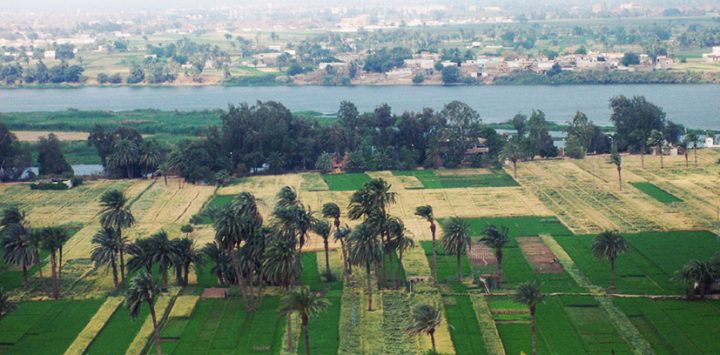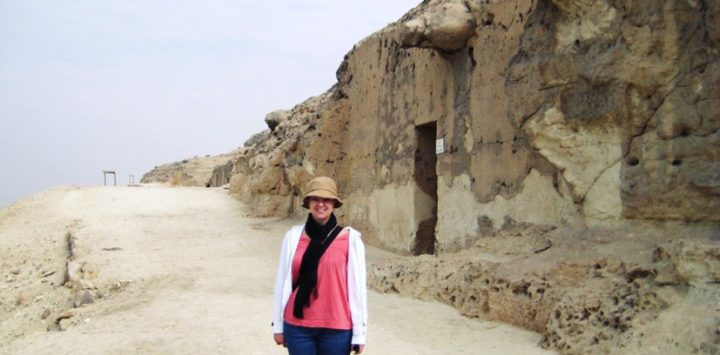Geographical Location of the Tombs of Beni Hassan
The Tombs of Beni Hassan are situated on the East Bank of the River Nile, in contrary to many ancient burial sites as the Pharaohs always believed that the East Bank of the River Nile is the city of the living and the West Bank is the city of the dead. This ancient necropolis is located 20 kilometers to the South of the city of El Minya. This ancient necropolis was named after the nearby village of Beni Hassan.
The city of El Minya is located 245 kilometers to the South of Cairo, the Egyptian capital, 640 Kilometers to North of Aswan, around 420 kilometers to the North of Luxor, and about 500 kilometers to the South East of the city of Alexandria.
The History and the Discovery of the Tombs of Beni Hassan
The tombs of Beni Hassan date to the reign of the Middle Kingdom in the ancient Egyptian history. These tombs were used as the burial place of many local governors of the region of El Minya during the ruling period of the 11thdynasty that ruled over Egypt for a period from 2134 till 1991 BC and the 12th dynasty that reigned from 1991 till 1759 BC.
The architects responsible for the establishment of these tombs chose the East Bank of the River Nile because the soil of the mountains in the West Bank of the river was sandy and would not suitable to be used for burials. Moreover, due to the hard nature of the rocks in the mountains where the tombs are located, the ancient Egyptians had to cover the walls with a layer of gypsum in order to be able to create his inscriptions and wall paintings, a common feature in many historical tombs in Egypt.
The Description of the Tombs of Beni Hassan Today
Today a number of tourists enjoying their holidays in Egypt would visit the 39 discovered tombs of Beni Hassan that were all cut out of rocks in many sections in the mountain.
This necropolis in fact belonged to some army leaders and regional rulers who chose to be buried in their own province due to their growing power and not to be buried near the royal necropolis in Saqqara at the time.
The ancient necropolis of Beni Hassan marks an important transitory phase between the style of the tombs in the Old Kingdom and the New Kingdom. In the old kingdom, the Pharaohs used to build a Mastaba or a layer of stone above the burial chamber. Even with the construction of the pyramids in Giza or Saqqara, the burial chambers remained without no decorations or colorings. To the contrary, the tombs of Beni Hassan had deeper shafts, more elaborate layout, decorations, and colors.
Among the most important tombs in Beni Hassan, there is the tomb of Amenmhat. Situated in the Northern section of the necropolis, this tomb dates to the ruling period of the king Senusert I who was the king of Egypt from 1956 till 1911 BC.
The owner of the tomb was the governor of the ibex province during the reign of the king. His tomb has an open courtyard with two columns at the entrance. Afterwards, the guests find themselves in hall that has four pillars.
Among the most important scenes of the tomb of Amenmhat in the Beni Hassan ancient necropolis is that in the eastern wall. It shows some professional wrestling training. This is besides some training on the usage of swords, arrows, and shields.
On the Western walls of the tomb, there is a complete demonstration of the manufacturing of leather in the reign of the Middle Kingdom in ancient Egypt.
Another example of interesting tombs in Beni Hassan is the tomb of Khunumhotep, who was also a ruler in the ibex province in the Middle Kingdom. This tomb has the best-preserved wall paintings in Beni Hassan with many scenes showing the deceased fishing. There are also some scenes of natural elements like birds and plants that marvelously painted and wonderfully preserved.
The tomb of Khunumhotep also hosts some scenes of him riding in a small boat made of the papyrus plant and haunting some birds using a throw-stick in one of the most amazing scenes in his tomb in Beni Hassan.
The northern wall of the tomb of Khunumhotep in Beni Hassan has some remarkable scenes of various topics. The most important among them is the scene is the arrival of a group of 39 people to Egypt having some goods with them and playing music. This group of people turned out to be the Hyksos, who took control of Egypt at the end of the Middle Kingdom at the end of the 18th century BC.














